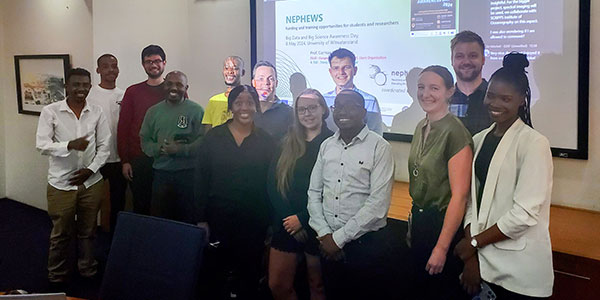Wits hosts Southern African synchrotron workshop
- Wits University
South African researchers have fully funded access to the European Synchrotron Radiation Facility, through the NRF.
Wits University played host to an awareness workshop to introduce researchers and students of the advantages of undertaking research at the European Synchrotron Radiation Facility (ESRF) in France.

Based in Grenoble, the synchrotron is the world’s brightest synchrotron light source and centre of excellence for fundamental and innovation-driven research in condensed and living matter science. It produces X-rays 100 billion times brighter than X-rays used in hospitals, giving researchers the ability to make 3D scans of objects on microscopic scale for their research.
The workshop at Wits was hosted in association with the EU horizon grants NEPHEWS and STREAMLINE, the ESRF, African Academy of Sciences and the African Lightsource to show the various research that can be done at the facility. It was attended by 53 researchers from South Africa, Botswana and Eswatini, and included various presentations from current research being done at the facility, including the Human Organ Atlas, a project that maps the human body from micron scale to intact organ scale.
“The degree of resolution of experimental results that can be achieved through Synchrotron and Neutron sources cannot be achieved through any other means currently,” says Dr Kathleen Dollman, organiser of the workshop and a Wits graduate who is now based at the ESRF. “These facilities hold huge benefits for research in areas that are very important for African development, including, biomedicine, energy and engineering, food security and natural and cultural heritage sciences.”
The workshop was opened by Wits Dean of Science, Professor Nithaya Chetty. After various presentations, students had the chance to present ideas for possible research projects at the ESRF. These presentations were then critically evaluated by a panel of experts in the fields biomedical research, natural and cultural heritage and engineering.
“By building an African network and training at regional facilities in Africa, we aim to build technical capacity and awareness of these facilities. Africa is the only continent without a synchrotron, and a step in the roadmap to achieving a lightsource in Africa, is by promoting these regional workshops and creating networking between African regions to gain expertise in these fields,” says Dollman.
Wits University operates a Micro-CT scanner in the Evolutionary Studies Institute. This allows researchers to create 3D images of fossil-bearing rocks non-invasively, in order to preserve the integrity of invaluable fossils.
“We would like to see students practicing on a small scale on facilities such as the Wits Micro-CT scanner, so that when they go and do research at the ESRF they would know what to do, and not feel completely overwhelmed,” said Chetty in his welcome address.
Facilities such as the ESRF host some of the world’s most dedicated scientists together with some of the most advanced large scale scientific instrumentation. The NRF has made a contribution towards the ESRF. This makes South Africa a member country of the institute. South African researchers have fully funded experimental access to the ESRF by submitting a research proposal to the ESRF, through the following link https://www.esrf.fr/UsersAndScience/UserGuide/Applying
